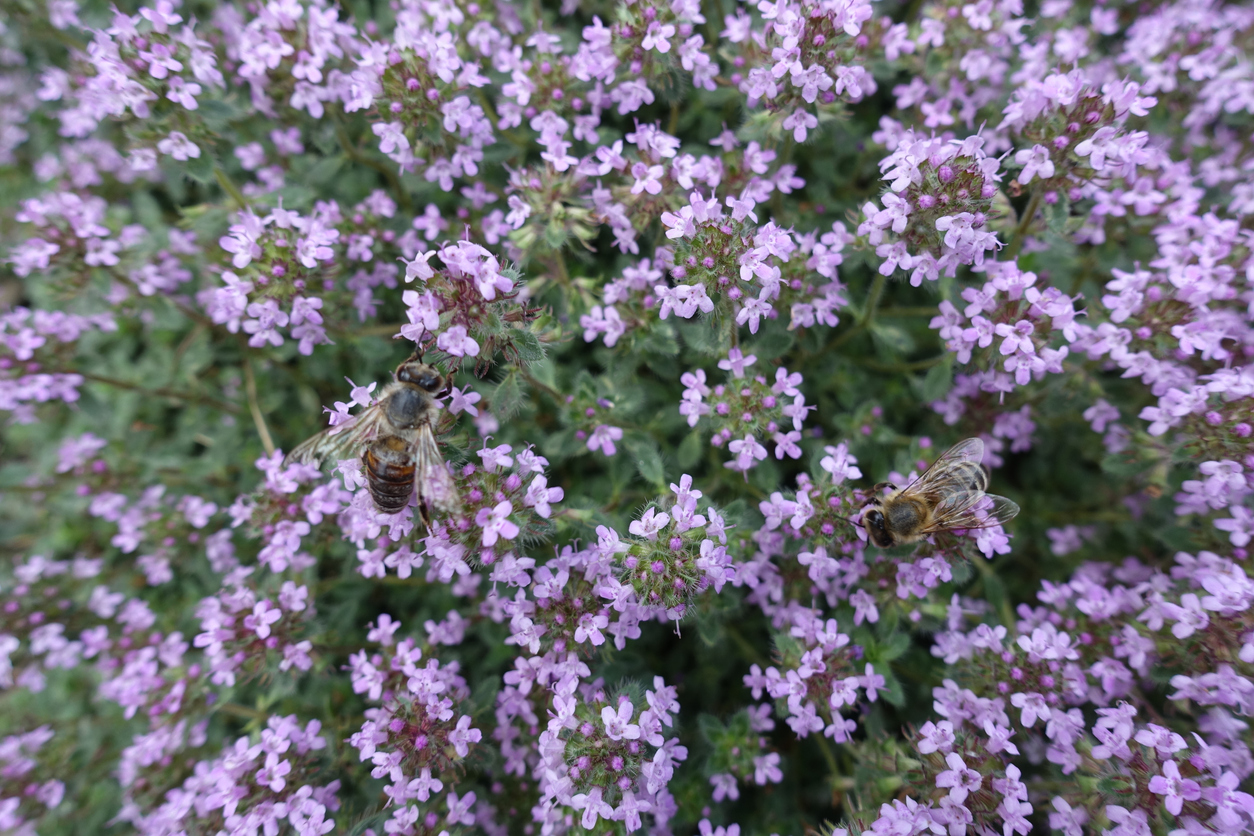Mother of thyme plant – Mother of thyme, a beloved herb in the culinary and medicinal realms, takes center stage in this exploration of its scientific classification, cultivation practices, and diverse applications. As we delve into the captivating world of this aromatic plant, we will uncover its unique characteristics, optimal growing conditions, and the myriad ways it enhances our lives.
Scientifically classified as Thymus serpyllum, mother of thyme belongs to the Lamiaceae family, renowned for its vast array of aromatic herbs. Its physical attributes are equally distinctive, featuring tiny, oval-shaped leaves arranged in opposite pairs along slender, creeping stems. These morphological features contribute to its dense, mat-forming growth habit.
Taxonomy and Morphology

The mother of thyme plant, scientifically known as Thymus serpyllum, belongs to the Lamiaceae family. This family is known for its aromatic plants, including basil, mint, and lavender.
The mother of thyme plant is a small, low-growing perennial that forms a dense mat of foliage. It typically grows to a height of 10-15 cm and has a spreading habit.
Size and Shape
- The mother of thyme plant has small, oval-shaped leaves that are 5-10 mm long and 2-4 mm wide.
- The leaves are arranged in opposite pairs along the stems and have a slightly serrated margin.
- The stems are slender and creeping, rooting at the nodes.
Leaf Structure
- The leaves of the mother of thyme plant are covered in tiny glands that secrete essential oils.
- These oils give the plant its characteristic thyme scent.
- The leaves also contain compounds called flavonoids, which are known for their antioxidant properties.
Cultivation and Care

The mother of thyme plant is relatively easy to cultivate and care for. It prefers well-drained soil, full sun to partial shade, and a moderate temperature range. With proper care, it can thrive in various environments.
Planting
Mother of thyme can be planted from seeds, cuttings, or divisions. When planting from seeds, sow them indoors 6-8 weeks before the last frost. Transplant the seedlings outdoors after they have developed their first set of true leaves. When planting from cuttings, take 3-4 inch cuttings from a healthy plant and root them in moist soil.
Watering
Water the mother of thyme plant deeply and regularly, especially during hot and dry weather. Allow the soil to dry out slightly between waterings. Avoid overwatering, as this can lead to root rot.
Fertilizing
Fertilize the mother of thyme plant lightly with a balanced fertilizer once a month during the growing season. Avoid overfertilizing, as this can damage the plant.
Growing Conditions
The mother of thyme plant prefers well-drained soil with a pH between 6.0 and 7.5. It can tolerate a wide range of soil types, but it grows best in sandy or loamy soil. The plant prefers full sun to partial shade and a moderate temperature range between 50-80°F (10-27°C).
Harvesting
Harvest the mother of thyme plant by cutting the stems just above the soil line. The leaves can be used fresh or dried. To dry the leaves, spread them out on a baking sheet and place them in a warm, dry place. Once the leaves are completely dry, store them in an airtight container.
Propagation
The mother of thyme plant can be propagated by cuttings, division, or layering. Cuttings can be taken from healthy plants in the spring or summer. Division can be done in the spring or fall. Layering can be done in the spring or summer.
Culinary and Medicinal Uses: Mother Of Thyme Plant

Mother of thyme possesses a distinctive flavor profile, characterized by its intense, earthy aroma and slightly bitter, pungent taste. Its versatility in the kitchen makes it a beloved herb for both culinary and medicinal purposes.
Culinary Uses
In cooking, mother of thyme adds a robust, herbaceous flavor to dishes. It pairs exceptionally well with grilled meats, roasted vegetables, and hearty stews. The leaves can be used fresh or dried and are often added to marinades, rubs, and spice blends.
Medicinal Properties, Mother of thyme plant
Mother of thyme has a long history of medicinal use, dating back to ancient times. It contains a variety of compounds, including thymol, which have antimicrobial, antiviral, and antioxidant properties.
Traditionally, mother of thyme has been used to treat a range of ailments, including respiratory infections, digestive issues, and skin conditions. It is also believed to have calming and soothing effects on the nervous system.
Examples
In culinary applications, mother of thyme is often used in the following dishes:
- Grilled lamb chops with thyme marinade
- Roasted root vegetables with thyme and rosemary
- Beef stew with thyme and bay leaves
For medicinal purposes, mother of thyme can be used in the following ways:
- As a tea to soothe coughs and sore throats
- As a tincture to treat digestive problems
- As an essential oil to promote relaxation and sleep